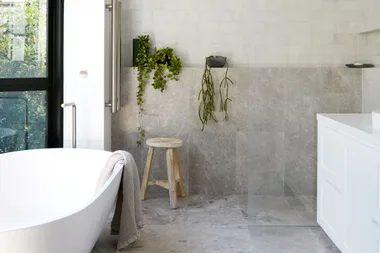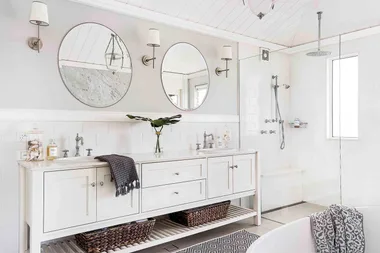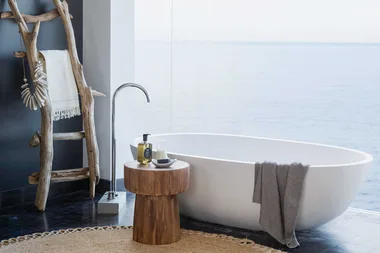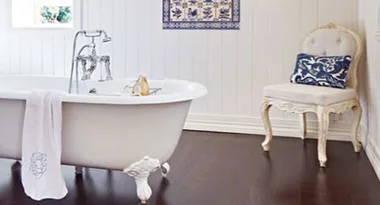You’ve decided between freestanding and built in and have measurements in hand to go shopping, only to be hit with a barrage of material options. Here are the pros and cons to consider.
1. Cast iron
Extremely durable, cast-iron baths are baths for life. They also keep the water warm for longer, as the heat transfers to the iron. The only downside is the weight, which makes them unsuitable for certain spaces, such as apartment and upstairs bathrooms.
2. Acrylic
Generally the most budget-friendly option, acrylic baths are also lightweight, so ideal for upper storeys and apartments. They require gentle cleaning, however, as they scratch easily.

3. Steel enamel
Colder to the touch than acrylic, steel enamel makes up for chilly first impressions by keeping the bath warm for longer. It is very durable and difficult to chip too. “Steel-enamel baths are also UV- and chemical-resistant, meaning they won’t discolour over time,” adds Reece’s Daniela Santilli.
4. Stone or composite
Epitomising pure luxury, stone and composite baths are also durable and great at retaining heat. On the downside, stone tubs are very heavy on both your floors and your pocket.
For more inspiration click here.
 Eve Wilson
Eve Wilson




